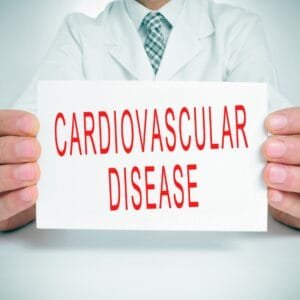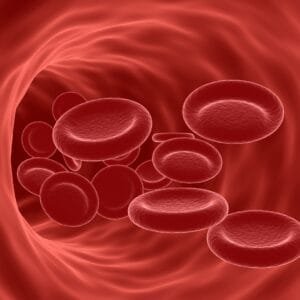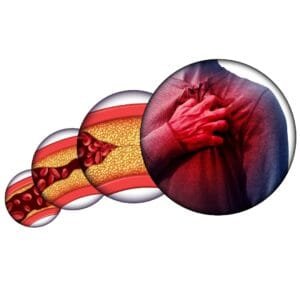Cardiovascular Disease: A Comprehensive Guide to Heart Health
Cardiovascular disease (CVD) encompasses a group of disorders affecting the heart and blood vessels. It remains the leading cause of death globally, accounting for nearly one-third of all deaths annually. Conditions like coronary artery disease, heart failure, and arrhythmias fall under the umbrella of CVD. Understanding the causes, symptoms, and preventive measures can help individuals protect their heart health and improve their quality of life.



What is Cardiovascular Disease?
Cardiovascular disease refers to any condition involving the heart or blood vessels. It includes a range of disorders, such as:
- Coronary Artery Disease (CAD): Narrowing of the coronary arteries, often leading to heart attacks.
- Heart Failure: The heart’s inability to pump blood efficiently.
- Arrhythmias: Irregular heart rhythms that affect blood flow.
- Stroke: A blockage or rupture of blood vessels in the brain.
- Peripheral Artery Disease (PAD): Narrowing of blood vessels supplying the limbs.
CVD is often caused by atherosclerosis, a condition where fatty deposits build up in the arterial walls, restricting blood flow.
Causes of Cardiovascular Disease
CVD develops due to a combination of lifestyle, genetic, and environmental factors. Common causes include:
- High Blood Pressure (Hypertension): Strains the heart and damages arteries.
- High Cholesterol: Leads to plaque formation in the arteries.
- Smoking: Damages blood vessels and accelerates atherosclerosis.
- Diabetes: Increases the risk of CVD due to high blood sugar levels.
- Obesity: Places extra strain on the heart and increases cholesterol levels.
- Unhealthy Diet: Diets high in saturated fats, sodium, and sugar contribute to CVD risk.
- Lack of Physical Activity: Leads to poor cardiovascular health.
Symptoms of Cardiovascular Disease
CVD symptoms vary depending on the type and severity of the condition. Common symptoms include:
- Chest Pain or Discomfort (Angina): A common sign of coronary artery disease.
- Shortness of Breath: Especially during physical activity or while lying flat.
- Fatigue or Weakness: Caused by reduced oxygen delivery to the body.
- Irregular Heartbeat: Palpitations or fluttering in the chest.
- Swelling in the Legs or Abdomen: Often a symptom of heart failure.
Keywords:
Symptoms of cardiovascular disease, heart disease signs, chest pain, irregular heartbeat.
Types of Cardiovascular Diseases
Cardiovascular diseases are categorized into several types:
1. Coronary Artery Disease (CAD)
A condition caused by the narrowing or blockage of coronary arteries due to plaque buildup. CAD is the leading cause of heart attacks.
2. Heart Failure
Occurs when the heart cannot pump blood effectively. Symptoms include breathlessness, swelling, and fatigue.
3. Arrhythmias
Irregular heart rhythms that can range from harmless to life-threatening. Examples include atrial fibrillation and ventricular tachycardia.
4. Stroke
A medical emergency caused by a blockage (ischemic stroke) or rupture (hemorrhagic stroke) of blood vessels in the brain.
5. Peripheral Artery Disease (PAD)
Narrowing of blood vessels in the limbs, often leading to leg pain during walking (claudication).
Complications of Cardiovascular Disease
If left untreated, CVD can result in serious complications:
- Heart Attack: Sudden blockage of blood flow to the heart muscle.
- Stroke: Causes brain damage and long-term disability.
- Kidney Damage: Due to reduced blood flow.
- Aneurysm: A bulge in a blood vessel that can rupture and cause internal bleeding.
Diagnosis of Cardiovascular Disease
Early detection of CVD is critical. Diagnostic tests include:
- Electrocardiogram (ECG): Measures electrical activity in the heart.
- Echocardiogram: Uses sound waves to create images of the heart.
- Stress Test: Assesses heart function during physical exertion.
- Coronary Angiography: Visualizes blood flow in coronary arteries.
- Blood Tests: Checks cholesterol and blood sugar levels.
Treatment Options for Cardiovascular Disease
Lifestyle Changes
- Healthy Diet: Focus on whole grains, fruits, vegetables, and lean proteins.
- Exercise Regularly: Aim for 30 minutes of moderate activity most days.
- Quit Smoking: Dramatically reduces the risk of heart disease.
- Weight Management: Helps lower blood pressure and cholesterol levels.
Medications
- Statins: Lower cholesterol levels.
- Antihypertensive Drugs: Control high blood pressure.
- Anticoagulants: Prevent blood clots.
- Beta-Blockers: Reduce heart rate and lower blood pressure.
Surgical Interventions
In severe cases, surgical procedures may be necessary:
- Angioplasty and Stenting: Opens blocked arteries.
- Coronary Artery Bypass Grafting (CABG): Reroutes blood flow around blocked arteries.
- Pacemakers and ICDs: Devices to manage arrhythmias.
Preventing Cardiovascular Disease
Preventing CVD involves adopting a heart-healthy lifestyle. Tips include:
- Monitor Blood Pressure and Cholesterol: Keep levels within the normal range.
- Exercise Regularly: Physical activity improves heart health.
- Eat a Balanced Diet: Limit saturated fats, sodium, and added sugars.
- Avoid Tobacco Products: Smoking increases the risk of heart disease.
- Manage Stress: Practice relaxation techniques like yoga or meditation.
FAQs about Cardiovascular Disease
1. What is cardiovascular disease?
Cardiovascular disease refers to disorders affecting the heart and blood vessels, such as coronary artery disease, heart failure, and stroke.
2. What are the early signs of cardiovascular disease?
Early signs include chest pain, shortness of breath, fatigue, and swelling in the legs.
3. Can cardiovascular disease be cured?
While CVD cannot always be cured, it can be managed through lifestyle changes, medications, and in some cases, surgical interventions.
4. What increases the risk of cardiovascular disease?
Risk factors include high blood pressure, high cholesterol, smoking, diabetes, and obesity.
5. How can I prevent cardiovascular disease?
Adopt a heart-healthy lifestyle with regular exercise, a balanced diet, and by avoiding tobacco products.
Conclusion
Cardiovascular disease is a leading cause of illness and death, but it is preventable and manageable with timely intervention. By understanding the risk factors, recognizing symptoms, and adopting a healthier lifestyle, individuals can significantly reduce their chances of developing CVD. Regular check-ups and medical guidance are key to maintaining heart health.
